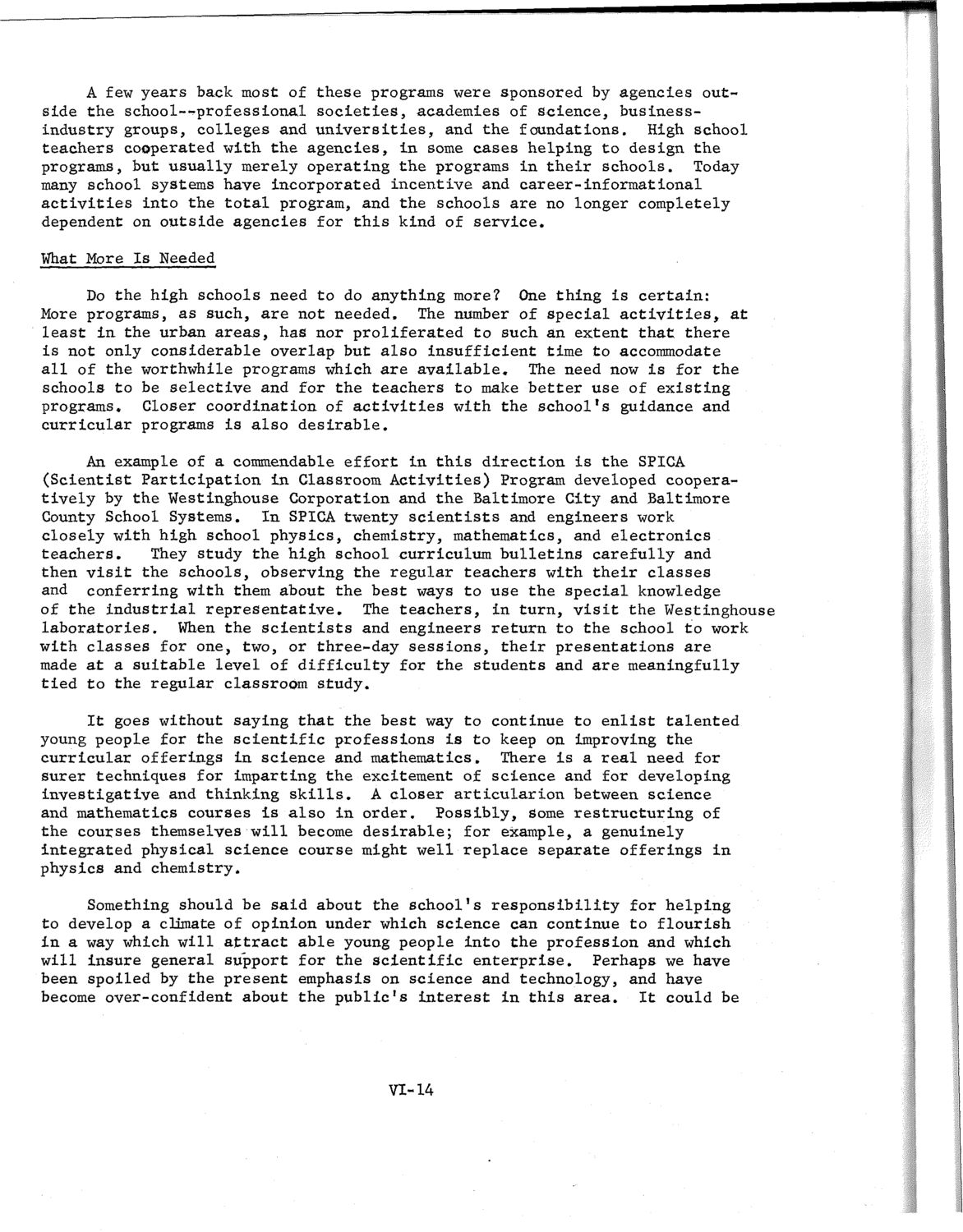| |
| |
Caption: SWE - Proceedings of the First International Conference of Women Engineers and Scientists
This is a reduced-resolution page image for fast online browsing.

EXTRACTED TEXT FROM PAGE:
A few years back most of these programs were sponsored by agencies outside the school—-professional societies, academies of science, businessindustry groups, colleges and universities, and the foundations. High school teachers cooperated with the agencies, in some cases helping to design the programs, but usually merely operating the programs in their schools. Today many school systems have incorporated incentive and career-informational activities into the total program, and the schools are no longer completely dependent on outside agencies for this kind of service. What More Is Needed Do the high schools need to do anything more? One thing is certain: More programs, as such, are not needed. The number of special activities, at least in the urban areas, has nor proliferated to such an extent that there is not only considerable overlap but also insufficient time to accommodate all of the worthwhile programs which are available. The need now is for the schools to be selective and for the teachers to make better use of existing programs. Closer coordination of activities with the school's guidance and curricular programs is also desirable. An example of a commendable effort in this direction is the SPICA (Scientist Participation in Classroom Activities) Program developed cooperatively by the Westinghouse Corporation and the Baltimore City and Baltimore County School Systems. In SPICA twenty scientists and engineers work closely with high school physics, chemistry, mathematics, and electronics teachers. They study the high school curriculum bulletins carefully and then visit the schools, observing the regular teachers with their classes and conferring with them about the best ways to use the special knowledge of the industrial representative. The teachers, in turn, visit the Westinghou laboratories. When the scientists and engineers return to the school to work with classes for one, two, or three-day sessions, their presentations are made at a suitable level of difficulty for the students and are meaningfully tied to the regular classroom study. It goes without saying that the best way to continue to enlist talented young people for the scientific professions is to keep on improving the curricular offerings in science and mathematics. There is a real need for surer techniques for imparting the excitement of science and for developing investigative and thinking skills. A closer articularion between science and mathematics courses is also in order. Possibly, Some restructuring of the courses themselves will become desirable; for example, a genuinely Integrated physical science course might well replace separate offerings in physics and chemistry. Something should be said about the school's responsibility for helping to develop a climate of opinion under which science can continue to flourish in a way which will attract able young people into the profession and which will insure general support for the scientific enterprise. Perhaps we have been spoiled by the present emphasis on science and technology, and have become over-confident about the public's interest in this area. It could be VI-14
| |